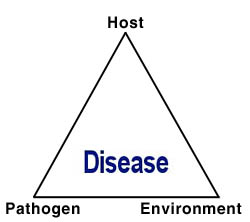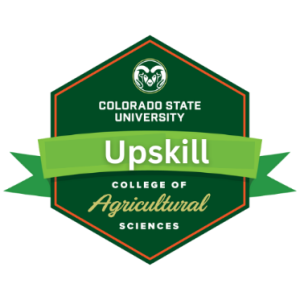7.2 – The Importance of Seedborne Pathogens
Diseases vs. Pathogens
A plant disease is any condition causing abnormal growth or plant dysfunction. Symptoms of disease are noticeable when a plant wilts, turns yellow (loss of chlorophyll), or develops lesions or spots on its fruit, stems, and leaves. This often results in decreased yield and, in severe cases, plant death.
The causes of plant disease are divided into two categories: living organisms (biotic) and non-living factors (abiotic). All biotic organisms capable of causing disease are called pathogens—these are microorganisms that are infectious and can incite disease. When a pathogen is carried by a seed, it is referred to as seedborne. This tables provides examples of both biotic and abiotic causes of disease.
| Biotic aka Plant Pathogens | Abiotic aka Causes of Plant Maladies |
| Fungi | Nutritional deficiencies or excesses |
| Bacteria | Drought |
| Water Molds | Overwatering |
| Virus and Viroid | Temperature extremes |
| Nematodes | Too much or not enough sunlight |
Seedborne pathogens are those carried on the surface of the seed, associated with the seed, or embedded within the seed’s tissues. These pathogens have the potential to infect germinating seedlings, leading to disease outbreaks in plant populations under suitable moisture and temperature conditions.

The Plant Disease Triangle
Disease only occurs if three elements are present: a susceptible host (the seed or plant), a pathogen, and a conducive environment. This concept, called the Plant Disease Triangle, explains that disease symptoms will only develop if all three factors are present at the right time, in the right amounts, and under appropriate environmental conditions. According to K.F. Baker, “A seed-borne pathogen must be present in, on, or within the seed, which may or may not show symptoms.”
In this 9 mins video clip, Laura will explain this concept in more detail for you.
Three types of associations between seeds and pathogens exist.1 Click on each term to see definitions and examples:
Summary
A seedborne disease occurs when a pathogen carried inside, on the surface, or accompanying a seed causes disease symptoms (e.g., wilting, necrosis, or reduced yield) in a plant growing in the field. The pathogen must be present on the seed and in the right environmental conditions for disease to develop.
Review
Work through these interactive questions to review the important concepts discussed.

Earn an industry recognized micro-credential at: CSU Upskill.
Any organism capable of causing a disease by obtaining nutrients either partially or wholly from its diseased host; a bacterium, virus, fungus, or other microorganism that can cause disease.
